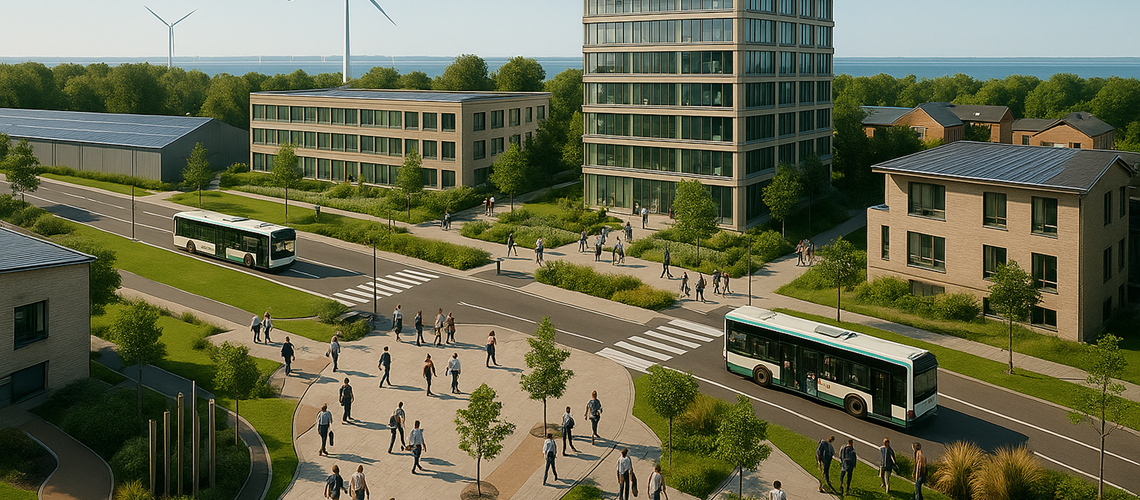Summary lessons learned from technical perspective in de Zwette demo site
Within this report and the FLEXPOSTS project, the focus is placed on analyzing the Zwette case to better
understand grid congestion now and in future growth scenarios, and to analyze the impact of potential solutions.
First, the focus will be on potential methodologies and tools that can be used for analyzing current and future grid congestion, as well as the impact of potential solutions, task T3.1. Next, these tools will be used to model the De Zwette area in Leeuwarden to perform a current state analysis, followed by future PED scenarios as part of task T4.1.
One of the future PED scenarios will be further developed by adding flexibility to lower the impact on the electricity grid and increase balance, as part of task T4.4. Additionally, the PowerNodes model will be made available for stakeholders and used in stakeholder sessions, as part of task T4.6. Finally, results and conclusions from the scenarios will be discussed, and a general tool will be proposed for performing high-level analysis of grid-congested areas
Barriers to implementing PED’s in the Netherlands
Barriers
- Taxation and ACM rules limit attractiveness and potential of energy sharing
- DSO has limited authority for pro-active investments, and limited tools to optimize the waiting list for grid connections
- Rules/costs are not inviting optimal behaviour on grid load, different for GVB (business) and KVB (household)
- Market Failure in Value Capture: PEDs generate substantial social, environmental, and indirect financial value, these are often externalities that cannot be captured by investors or developers directly.
Potentials
- New grid code: social prioritisation, congestion management with time bound contracts
- Financial incentives to make flexibility options attractive
- Redesign responsibility of the TSO/DSO regarding energy buffers
- Balance socialisation of costs for grid expansion and heat infrastructure, to realise lowest national costs for heat transition
Barriers
- Existing policies, roles and responsibilities of DSO/TSO and government levels are not well tailored to the new energy system causing inefficiencies, long delays and suboptimal solutions
- Energy planning and urban planning are responsibilities of different departments at various governmental levels.
- Complex Stakeholder coordination: Many entities need to contribute/invest. They all need incentives (financial and non-financial) to participate. Especially given the long duration of the projects, this could make stakeholder management/incentivation complex.
- Insufficient manpower and knowledge
Potentials
- Redesign Urban Planning policies and roles & responsibilities to streamline and integrate the urban and energy planning
- "Flex-hunting" as being spearheaded by the municipality at De Zwette
Barriers
- Grid congestion.
- Increased renewable energy production and use of electricity instead of fossil fuels for heating and mobility increases the load on the electrical grid.
- The simultaneity of grid usage is increasing, further aggravating congestion. Grid reinforcements cannot keep pace.
Potentials
- Grid re-enforcements
- Bring buffers in the system: deploying energy storage, bi-directional charging, smart charging, curtailment,
- Behind the meter solutions: energy conservation/insulation, use energy at smart times, generation by solar panels, battery etc.
- Flexibility provision via deployment of district heating, demand shifting, peak power generation with green gas.
- Reduce paper congestion by pro-active management of peak-load via measurements, advanced tooling and commercial constructs
De Zwette: Business-Led Solutions to Grid Challenges
This report explores stakeholder perspectives on the challenges and opportunities in establishing a sustainable, energy-positive business park at De Zwette in Leeuwarden, as part of the case study in the Flexposts project.
While grid congestion emerged as a major barrier to energy transition goals, stakeholder consultations revealed strong commitment to practical, scalable solutions. From "behind-the-meter" innovations to smarter integration of energy and spatial planning, the study highlights the need for business-driven yet future-focused strategies.
Though the Positive Energy District (PED) concept was not central, its principles proved valuable in addressing real-world constraints. The findings offer key insights for regions navigating energy and development transitions.

